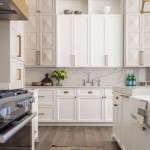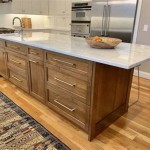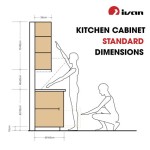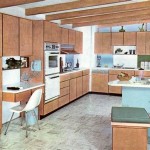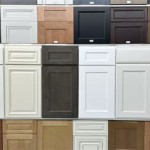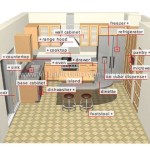Crown Molding Styles for Kitchen Cabinets
Crown molding, a decorative trim applied to the top of kitchen cabinets, adds a finishing touch that elevates the overall aesthetic of a kitchen. This molding seamlessly bridges the gap between the cabinet tops and the ceiling, creating a sense of sophistication and visual appeal. The selection of crown molding style is a crucial design decision that should be made in harmony with the existing kitchen design, cabinet style, and desired ambiance.
The availability of diverse crown molding styles allows homeowners and designers to personalize the kitchen space according to individual preferences and the overarching architectural style of the home. From simple, minimalist designs to ornate and intricate patterns, the options are extensive. This variety enables the creation of a kitchen that is both functional and visually stunning. Proper installation of crown molding is essential to achieving a professional and seamless look.
Understanding the Function of Crown Molding
Beyond its aesthetic contribution, crown molding serves a practical function in kitchen design. It effectively conceals any unevenness or gaps between the cabinet tops and the ceiling, resulting in a cleaner and more polished appearance. This is particularly important in older homes where ceilings may not be perfectly level. The molding provides a visual transition, softening the lines and creating a more cohesive design.
Crown molding can also visually increase the perceived height of a kitchen. By drawing the eye upward, it makes the space feel larger and more open. This is especially beneficial in kitchens with lower ceilings. Selecting a crown molding style with a taller profile can further accentuate this effect. Furthermore, crown molding helps protect cabinet tops from dust and debris, contributing to easier maintenance and cleaning.
The function of crown molding extends to unifying disparate elements within the kitchen. It can tie together the cabinet design, backsplash, and other decorative elements, creating a harmonious and well-integrated space. The selection of a specific molding style can reinforce the overall design theme, whether it be traditional, contemporary, or transitional.
Exploring Popular Crown Molding Styles
The selection of crown molding styles is expansive, encompassing a wide range of materials, profiles, and decorative details. The most common materials include wood, MDF (Medium-Density Fiberboard), and polyurethane. Wood offers a classic and timeless appeal, while MDF provides a cost-effective and versatile alternative. Polyurethane is lightweight, moisture-resistant, and ideal for kitchens with high humidity.
The profiles of crown molding vary significantly, from simple, clean lines to more elaborate and ornate shapes. Some of the most popular styles include:
- Simple Cove Molding: This is a classic and versatile style characterized by its concave profile. It is well-suited for a variety of kitchen designs, from traditional to contemporary. Its simplicity makes it easy to integrate into existing decor.
- Ogee Molding: Ogee molding features an S-shaped curve, adding a touch of elegance and sophistication. It is a popular choice for traditional and transitional kitchens. The gentle curves create a visually appealing detail.
- Dentil Molding: Dentil molding incorporates a series of small, rectangular blocks or "teeth" along its lower edge. This adds a decorative element and is often used in more formal or traditional kitchens. The dentil detail creates a visually interesting texture.
- Stacked Molding: This involves combining two or more different molding profiles to create a more complex and visually appealing design. This allows for customization and the creation of a unique look. Stacked molding offers a greater level of design flexibility.
- Modern or Minimalist Molding: Characterized by clean lines and simple geometric shapes, this style is ideal for contemporary kitchens. It emphasizes functionality and understated elegance. Modern molding complements sleek and uncluttered designs.
The choice of molding style should be carefully considered in relation to the existing cabinet design and the overall kitchen aesthetic. A simple cove molding may be appropriate for a minimalist kitchen, while a more ornate dentil molding may be suitable for a traditional kitchen.
Considerations for Selecting the Right Crown Molding
Several factors should be taken into account when selecting the appropriate crown molding style for kitchen cabinets. These include the size and layout of the kitchen, the style of the cabinets, the height of the ceiling, and the overall design theme.
The size of the kitchen is an important consideration. In smaller kitchens, it is generally advisable to choose a smaller, less imposing molding profile to avoid overwhelming the space. Larger kitchens can accommodate bolder and more elaborate molding styles. The height of the ceiling also plays a role in determining the appropriate molding size. Higher ceilings can support taller moldings, while lower ceilings require more modest options.
The style of the cabinets is a key factor in determining the appropriate crown molding style. Traditional cabinets typically pair well with ornate moldings, while contemporary cabinets are better suited to simpler, more minimalist designs. The color and finish of the cabinets should also be considered. The molding should complement the cabinet color and finish, creating a cohesive and harmonious look. If the cabinets are a dark color, a lighter molding can provide a contrast and highlight the architectural details.
The overall design theme of the kitchen should guide the selection of crown molding. If the kitchen is designed in a traditional style, a classic molding style such as ogee or dentil may be appropriate. If the kitchen is designed in a contemporary style, a simpler, more minimalist molding style may be more suitable. The goal is to select a molding style that enhances the overall aesthetic of the kitchen and reinforces the design theme.
The material of the crown molding is another important consideration. Wood offers a classic and timeless appeal, but it can be more expensive and require more maintenance. MDF is a cost-effective and versatile alternative, but it is not as durable as wood. Polyurethane is lightweight, moisture-resistant, and ideal for kitchens with high humidity. The choice of material will depend on the budget, the desired aesthetic, and the environmental conditions in the kitchen.
In addition to the style and material of the crown molding, the installation method should also be considered. Crown molding can be installed using a variety of techniques, including nailing, screwing, and adhesive. The choice of installation method will depend on the type of molding, the type of cabinet, and the skill level of the installer. Professional installation is often recommended to ensure a seamless and professional look.
Installation Tips for Crown Molding
Proper installation is crucial to achieving a professional and visually appealing result. While professional installation is often recommended, homeowners with intermediate DIY skills can successfully install crown molding with careful planning and execution. Accurate measurements, precise cuts, and secure fastening are essential for a seamless finish.
Before beginning the installation process, it is important to gather all the necessary tools and materials. These include a miter saw, measuring tape, level, nail gun or drill, wood glue, and sandpaper. It is also important to have a clear and well-lit workspace. Safety glasses and hearing protection should be worn at all times.
The first step in the installation process is to measure the length of each cabinet run. Be sure to measure accurately and double-check the measurements before cutting the molding. It is better to cut the molding slightly longer than necessary, as it can always be trimmed down later. Miter cuts are required for corners, typically at a 45-degree angle. The correct angle may vary slightly depending on the specific corner angle.
Once the molding is cut to the correct length and angle, it can be installed using nails, screws, or adhesive. When using nails or screws, be sure to pre-drill pilot holes to prevent the wood from splitting. Wood glue can be applied to the back of the molding to provide a stronger and more secure bond. The molding should be carefully aligned with the cabinet tops and pressed firmly into place. A level should be used to ensure that the molding is installed straight and level.
After the molding is installed, the nail holes or screw holes can be filled with wood filler. Once the wood filler is dry, it can be sanded smooth and painted or stained to match the cabinets. The joints between the molding sections can be caulked to create a seamless and professional look.
Installing crown molding can be a challenging project, but with careful planning and execution, it can be a rewarding experience. The addition of crown molding can significantly enhance the aesthetic appeal of a kitchen and add value to the home.
Selecting the right crown molding for kitchen cabinets is a significant design decision that requires careful consideration of various factors. By understanding the function of crown molding, exploring popular styles, and considering the specific characteristics of the kitchen, homeowners can make an informed choice that enhances the beauty and value of their homes.

11 Kitchen Cabinet Crown Molding Ideas For Your

3 Ways To Enhance Your Kitchen With Crown Molding

Kitchen Design Details Learn About Crown Molding On Cabinetry

3 Ways To Enhance Your Kitchen With Crown Molding

68 Crown Molding Ideas And Designs For Any Room In 2024 Traditional White Kitchen Cabinets Clean Interior Design

11 Kitchen Cabinet Crown Molding Ideas For Your

Crown Molding Trim How It Enhances Your Space

Crown Molding Ideas 10 Ways To Reinvent Any Room Bob Vila

Faq Crown Molding For Cabinets Dura Supreme Cabinetry

Decorative Molding Timberlake Cabinetry

